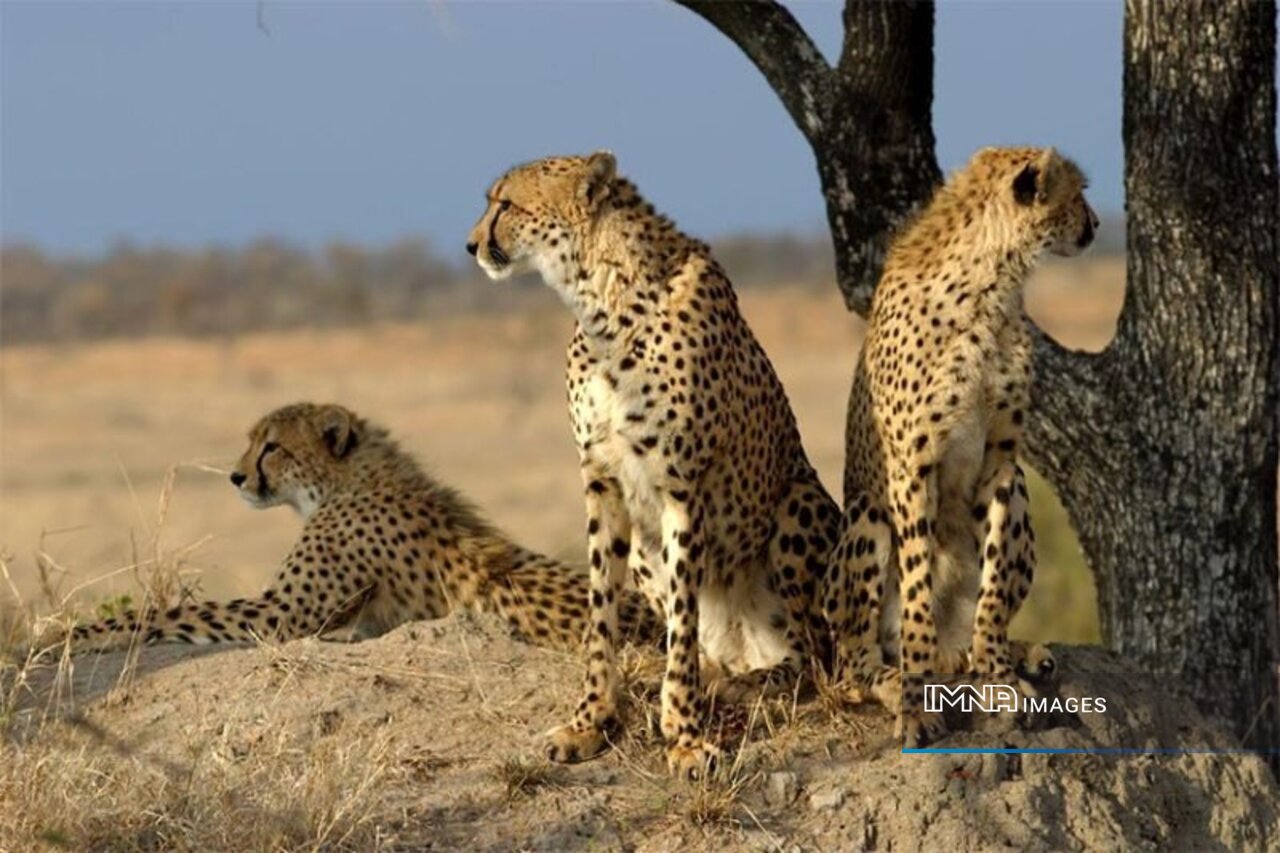The Asiatic cheetah once roamed across a wide range of countries throughout Asia, including India, Pakistan, Afghanistan, and the Arabian Peninsula. However, due to habitat loss, hunting, and other human activities, their population drastically declined over the years. Today, Iran is the only country where these majestic creatures can still be found in the wild.
Within Iran, the Asiatic cheetah primarily inhabits the central plateau region, encompassing areas such as Dasht-e Kavir and Dasht-e Lut. These areas provide vast expanses of open habitats, including desert plains, scrublands, and mountainous terrains, which are ideal for the cheetah's high-speed hunting.
Physical Characteristics
Compared to African cheetahs, Asiatic cheetahs have a slightly larger head, shorter mane, and thicker coat to adapt to the colder climate of their habitat. Adult males can weigh between 80 to 90 pounds (36 to 41 kilograms), while females are generally smaller, weighing around 60 to 70 pounds (27 to 32 kilograms).
Intensive Measures to Preserve Asiatic Cheetah Population Underway
With an estimated population of fewer than 50 individuals left in the wild, urgent measures are being taken to ensure the survival of this majestic species. Conservationists, researchers, and governments are joining forces to implement comprehensive strategies aimed at protecting and restoring the habitat of the Asiatic cheetahs.
Understanding the Threats
Before delving into the efforts being made to save the Asiatic cheetahs, it is crucial to grasp the challenges they face. The primary threats to their survival include habitat loss, poaching, and a dwindling prey base. Human encroachment, agriculture expansion, and infrastructure development have resulted in the fragmentation and degradation of their natural habitat. This has forced the cheetahs into smaller and isolated pockets, making them more vulnerable to extinction.
Conservation Initiatives
Various Iranian organizations and governmental bodies have initiated conservation projects to safeguard the Asiatic cheetahs. These initiatives focus on multiple fronts, including habitat restoration, anti-poaching measures, research, and community engagement.

Captive breeding
Experts have decided to experiment with captive breeding of Asiatic cheetahs as part of their efforts to revive the declining population. Despite initial difficulties, a female cheetah named "Iran" successfully gave birth to three cubs after mating with a male cheetah named "Firouz" in May 2022. Unfortunately, two of the cubs died within the first two weeks, but one named "Pirouz" managed to survive against the odds. However, Pirouz passed away in February due to acute kidney failure.
The death of the cubs has raised concerns among experts about the viability of captive breeding for cheetahs. Preserving genetic resources through genetic resource facilities and banks is crucial for conserving the genetic diversity of endangered species and ensuring their survival, according to Iranian Veterinary Information Network. Advanced reproductive technology, cryopreservation, and molecular cell biology techniques offer hope in safeguarding the genetic resources of these species for future generations.
Habitat Restoration
Restoring and protecting the cheetahs' natural habitat is critical for their survival. Efforts are being made to identify key areas and establish protected zones where human activities are limited. Alongside this, reforestation programs are being implemented to restore vegetation cover and create suitable habitats for the cheetahs and their prey.
Anti-Poaching Measures
Poaching remains a significant threat to the Asiatic cheetahs. To combat this, anti-poaching units have been established to patrol the cheetahs' habitats and prevent illegal hunting. These units work closely with local communities to gather intelligence and raise awareness about the importance of conserving this endangered species.
Research and Monitoring
In-depth research and monitoring programs are crucial for understanding the behavior, ecology, and population dynamics of the Asiatic cheetahs. Scientists and researchers are using advanced tracking technologies and camera traps to collect data on their movements, breeding patterns, and prey availability. This information helps in designing effective conservation strategies and assessing the success of ongoing efforts.
Community Engagement
Engaging local communities and creating a sense of ownership towards wildlife conservation is essential for long-term success. Conservation organizations are working closely with indigenous communities, providing education and alternative livelihood opportunities. By involving the local population, these initiatives aim to reduce human-wildlife conflicts and promote sustainable coexistence.
The Road Ahead
While significant progress has been made in recent years, saving the Asiatic cheetahs remains an uphill battle. The concerted efforts of governments, organizations, researchers, and communities are critical to secure a future for this magnificent species. It is vital that we continue to raise awareness, allocate adequate resources, and strengthen international cooperation to protect the remaining Asiatic cheetahs and their fragile habitats.
In conclusion, the plight of the Asiatic cheetahs serves as a reminder of the urgent need for conservation. By combining scientific knowledge, community involvement, and targeted action, we can ensure the survival of this iconic species. Let us stand united in our efforts to save the Asiatic cheetahs and preserve the biodiversity of our planet for generations to come.


Your Comment